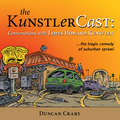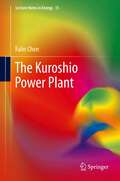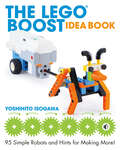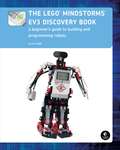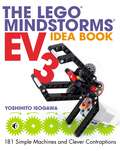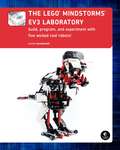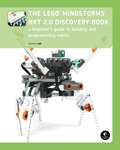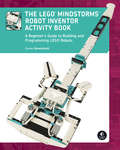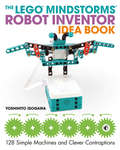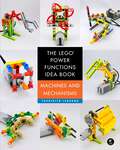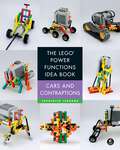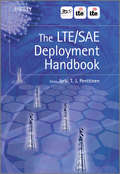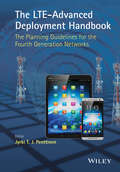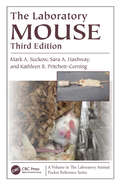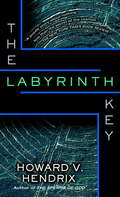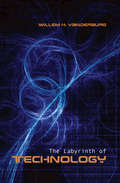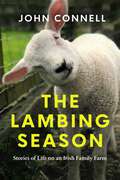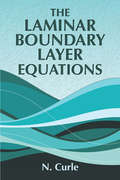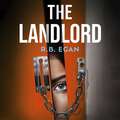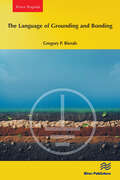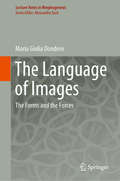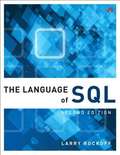- Table View
- List View
The KunstlerCast: Conversations with James Howard Kunstler
by Duncan CraryBased off the popular podcast, this book collects one man’s conversations with an outspoken social critic on the negative effects of the suburbs.James Howard Kunstler has been described as “one of the most outrageous commentators on the American built environment.” An outspoken critic of suburban sprawl, Kunstler is often controversial and always provocative. The KunstlerCast is based on the popular weekly podcast of the same name, which features Kunstler in dialogue with author Duncan Crary, offering a personal window into Kunstler’s worldview.Presented as a long-form conversational interview, The KunstlerCast revisits and updates all the major ideas contained in Kunstler’s body of work, including:The need to rethink current sources of transportation and energyThe failure of urban planning, architecture and industrial societyAmerica’s plastic, dysfunctional cultureThe reality of peak oilWhether sitting in the studio, strolling city streets, visiting a suburban mall or even “Happy Motoring,” the grim predictions Kunstler makes about America’s prospects are leavened by his signature sharp wit and humor. This book is rounded out by commentary, footnotes and supplemental vignettes told from the perspective of an “embedded” reporter on the Kunstler beat.Readers may or may not agree with the more dystopian of Kunstler’s visions. Regardless, The KunstlerCast is bound to inspire a great deal of thought, laughter, and hopefully, action.Praise for The KunstlerCast“A bracing dose of reality for an unreal world.” —Stephen J. Dubner, co-author of Freakonomics and SuperFreakonomics“Erudite, eloquent . . . with good humor about the hilariously grotesque North American nightmare of car-addicted suburban sprawl.” —Dmitry Orlov, author of Reinventing Collapse“Prepare to be enlightened, infuriated and amused.” —Gregory Greene, Director, The End of Suburbia“So enlightening yet casual that the reader feels like they’re eavesdropping into the den of Kunstler’s prodigious mind.” —Andrew D. Blechman, author of Leisureville
The Kuroshio Power Plant
by Falin ChenBy outlining a new design or the Kuroshio power plant, new approaches to turbine design, anchorage system planning, deep sea marine engineering and power plant operations and maintenance are explored and suggested. The impact on the local environment, particularly in the face of natural disasters, is also considered to provide a well rounded introduction to plan and build a 30MW pilot power plant. Following a literature review, the six chapters of this book propose a conceptual design by focusing on the plant's core technologies and establish the separate analysis logics for turbine design and the relay platforms. This is tempered against the ecological impact of both the construction and operation of the plant. These proposed technologies and plans can be further applied to power generation in other waters such as the Gulf Stream, the East Australian Current the Humboldt Current and the East Africa Coastal Current. Engineers, students and industry professionals are provided with a solid introduction to power plant technology as well as a design with specific real world applications
The LEGO BOOST Activity Book
by Daniele BenedettelliAt last, fans of the LEGO BOOST robot building kit have the learning resource they've been missing! Enter The LEGO BOOST Activity Book: a full-color guide that will help readers learn how to build and code LEGO creations that move, explore their environment, grab and lift objects, and more.The LEGO BOOST kit lets younger builders create fun, multifunctional robots by combining bricks with code, but it doesn't come with a manual. With the help of this complete guide to the LEGO BOOST set, you'll be on your way to building and programming BOOST robots in no time.You'll begin your exploration by building a basic rover robot called MARIO to help you learn the fundamentals of the BOOST programming environment. Next, you'll add features to your rover to control its movement and make it repeat actions and react to colors and sounds. Once you've learned some programming basics, you'll learn how to program your robot to do things like follow lines on the ground, scan its environment to decide where to go, and even play darts. As final projects, you'll create two complete robots: BrickPecker to help you organize your bricks and CYBOT, a robot that talks, shoots objects, and executes voice commands. As you advance through the book, optional lessons aim to deepen your understanding of basic robotics concepts. Brain BOOSter sections let you dig into the math and engineering behind your builds while a host of experiments seek to test your skills and encourage you to do more with your robots. With countless illustrations, extensive explanations, and a wealth of coding examples to guide you, The LEGO BOOST Activity Book is sure to take you from beginning builder to robotics whiz and give your robot-building brain that needed boost!
The LEGO BOOST Idea Book: 95 Simple Robots and Hints for Making More!
by Yoshihito IsogawaThe LEGO® BOOST® Idea Book contains dozens of ideas for building simple robots with the LEGO BOOST set.The LEGO® BOOST® Idea Book explores 95 creative ways to build simple robots with the LEGO BOOST set. Each model includes a parts list, minimal text, screenshots of programs, and colorful photographs from multiple angles so you can re-create it without step-by-step instructions.You'll learn to build robots that can walk and crawl, shoot and grab objects, and even draw using a pen! Each model demonstrates handy mechanical principles that you can use to come up with your own creations.Models come with building hints and ideas for putting your own spin on things. Best of all, every part you need to build these models comes in the LEGO BOOST Creative Toolbox (set #17101).
The LEGO MINDSTORMS EV3 Discovery Book: A Beginner's Guide to Building and Programming Robots
by Laurens ValkLEGO MINDSTORMS has changed the way we think about robotics by making it possible for anyone to build real, working robots. The latest MINDSTORMS set, EV3, is more powerful than ever, and The LEGO MINDSTORMS EV3 Discovery Book is the complete, beginner-friendly guide you need to get started.Begin with the basics as you build and program a simple robot to experiment with motors, sensors, and EV3 programming. Then you’ll move on to a series of increasingly sophisticated robots that will show you how to work with advanced programming techniques like data wires, variables, and custom-made programming blocks. You’ll also learn essential building techniques like how to use beams, gears, and connector blocks effectively in your own designs.Master the possibilities of the EV3 set as you build and program:–The EXPLOR3R, a wheeled vehicle that uses sensors to navigate around a room and follow lines–The FORMULA EV3 RACE CAR, a streamlined remote-controlled race car–ANTY, a six-legged walking creature that adapts its behavior to its surroundings–SK3TCHBOT, a robot that lets you play games on the EV3 screen–The SNATCH3R, a robotic arm that can autonomously find, grab, lift, and move the infrared beacon–LAVA R3X, a humanoid robot that walks and talksMore than 150 building and programming challenges throughout encourage you to think creatively and apply what you’ve learned to invent your own robots. With The LEGO MINDSTORMS EV3 Discovery Book as your guide, you’ll be building your own out-of-this-world creations in no time!Requirements: One LEGO MINDSTORMS EV3 set (LEGO SET #31313)
The LEGO MINDSTORMS EV3 Idea Book: 181 Simple Machines and Clever Contraptions
by Yoshihito IsogawaThe LEGO® MINDSTORMS® EV3 Idea Book explores dozens of creative ways to build amazing mechanisms with the LEGO MINDSTORMS EV3 set. Each model includes a list of the required parts, minimal text, and colorful photographs from multiple angles so you can re-create it without the need for step-by-step instructions.You’ll learn to build cars with real suspension, steerable crawlers, ball-shooters, grasping robotic arms, and other creative marvels. Each model demonstrates simple mechanical principles that you can use as building blocks for your own creations.Best of all, every part you need to build these machines comes in one LEGO set (#31313)!
The LEGO MINDSTORMS EV3 Laboratory: Build, Program, and Experiment with Five Wicked Cool Robots
by Daniele Benedettelli<P>The LEGO® MINDSTORMS® EV3 set offers so many new and exciting features that it can be hard to know where to begin. Without the help of an expert, it could take months of experimentation to learn how to use the advanced mechanisms and numerous programming features. <P>In The LEGO MINDSTORMS EV3 Laboratory, author Daniele Benedettelli, robotics expert and member of the elite LEGO MINDSTORMS Expert Panel, shows you how to use gears, beams, motors, sensors, and programming blocks to create sophisticated robots that can avoid obstacles, walk on two legs, and even demonstrate autonomous behavior. You’ll also dig into related math, engineering, and robotics concepts that will help you create your own amazing robots. Programming experiments throughout will challenge you, while a series of comics and countless illustrations inform the discussion and keep things fun. <P>As you make your way through the book, you’ll build and program five wicked cool robots: <br>–ROV3R, a vehicle you can modify to do things like follow a line, avoid obstacles, and even clean a room <br>–WATCHGOOZ3, a bipedal robot that can be programmed to patrol a room using only the Brick Program App (no computer required!) <br>–SUP3R CAR, a rear-wheel-drive armored car with an ergonomic two-lever remote control <br>–SENTIN3L, a walking tripod that can record and execute color-coded sequences of commands <br>–T-R3X, a fearsome bipedal robot that will find and chase down prey <P>With The LEGO MINDSTORMS EV3 Laboratory as your guide, you’ll become an EV3 master in no time. <br>Requirements: One LEGO MINDSTORMS EV3 set (LEGO SET #31313)
The LEGO MINDSTORMS NXT 2.0 Discovery Book: A Beginner's Guide to Building and Programming Robots
by Laurens ValkDiscover the many features of the LEGO® MINDSTORMS® NXT 2.0 set. The LEGO MINDSTORMS NXT 2.0 Discovery Book is the complete, illustrated, beginner's guide to MINDSTORMS that you've been looking for.The crystal clear instructions in the Discovery Book will show you how to harness the capabilities of the NXT 2.0 set to build and program your own robots. Author and robotics instructor Laurens Valk walks you through the set, showing you how to use its various pieces, and how to use the NXT software to program robots. Interactive tutorials make it easy for you to reach an advanced level of programming as you learn to build robots that move, monitor sensors, and use advanced programming techniques like data wires and variables. You'll build eight increasingly sophisticated robots like the Strider (a six-legged walking creature), the CCC (a climbing vehicle), the Hybrid Brick Sorter (a robot that sorts by color and size), and the Snatcher (an autonomous robotic arm). Numerous building and programming challenges throughout encourage you to think creatively and to apply what you've learned as you develop the skills essential to creating your own robots.Requirements: One LEGO MINDSTORMS NXT 2.0 set (#8547)Features:–A complete introduction to LEGO MINDSTORMS NXT 2.0–Building and programming instructions for eight innovative robots–50 sample programs and 72 programming challenges (ranging from easy to hard) encourage you to explore newly learned programming techniques–15 building challenges expand on the robot designs and help you develop ideas for new robotsWho is this book for?This is a perfect introduction for those new to building and programming with the LEGO MINDSTORMS NXT 2.0 set. The book also includes intriguing robot designs and useful programming tips for more seasoned MINDSTORMS builders.
The LEGO MINDSTORMS Robot Inventor Activity Book: A Beginner's Guide to Building and Programming LEGO Robots
by Daniele BenedettelliAn introduction to the LEGO Mindstorms Robot Inventor Kit through seven engaging projects.With its amazing assortment of bricks, motors, and smart sensors, the LEGO® MINDSTORMS® Robot Inventor set opens the door to a physical-meets-digital world. The LEGO MINDSTORMS Robot Inventor Activity Book expands that world into an entire universe of incredibly fun, uniquely interactive robotic creations! Using the Robot Inventor set and a device that can run the companion app, you&’ll learn how to build bots beyond your imagination—from a magical monster that gobbles up paper and answers written questions, to a remote-controlled transformer car that you can drive, steer, and shape-shift into a walking humanoid robot at the press of a button.Author and MINDSTORMS master Daniele Benedettelli, a robotics expert, takes a project-based approach as he leads you through an increasingly sophisticated collection of his most captivating robot models, chapter by chapter. Each project features illustrated step-by-step building instructions, as well as detailed explanations on programming your robots through the MINDSTORMS App—no coding experience required.As you build and program an adorable pet turtle, an electric guitar that lets you shred out solos, a fully functional, whiz-bang pinball machine and more, you&’ll discover dozens of cool building and programming techniques to apply to your own LEGO creations, from working with gears and motors, to smoothing out sensor measurement errors, storing data in variables and lists, and beyond. By the end of this book, you&’ll have all the tools, talent and inspiration you need to invent your own LEGO MINDSTORMS robots.
The LEGO MINDSTORMS Robot Inventor Idea Book
by Yoshihito IsogawaA follow-up to the best-selling LEGO® Technic Idea Book series by master builder and LEGO luminary Yoshihito Isogawa, readers learn to create their own robots from the LEGO MINDSTORMS Robot Inventor Set.If you&’ve had your fun building programmable, intelligent creations with the LEGO® MINDSTORMS® Robot Inventor set, it&’s time to take your bot-building to the next level! With over 125 new models, the LEGO MINDSTORMS Robot Inventor Idea Book will unleash your imagination and open up limitless possibilities for unique robotic designs.You&’ll learn how to build basic mechanisms with motors and sensors, robots that can walk or drive themselves, and practical tools for lifting, opening doors, drawing, and even launching projectiles. Then, bring them all to life with the LEGO MINDSTORMS Robot Inventor App, which lets you program your bots to perform tasks and missions.Each model is paired with an illustrated list of parts and multi-angled color photographs, so you can easily reproduce the projects without the need for step-by-step instructions. Best of all, you&’ll also be inspired to combine various mechanisms into your own interactive inventions, toys, cars, games, and more!To build the book&’s models, all you need is the LEGO® MINDSTORMS® Robot Inventor set (#51515) and a smart device that can run the MINDSTORMS App.
The LEGO Power Functions Idea Book, Volume 1: Machines and Mechanisms
by Yoshihito IsogawaThis first volume of The LEGO Power Functions Idea Book, Machines and Mechanisms, showcases small projects to build with LEGO Technic gears, motors, gadgets, and other moving elements. You’ll find hundreds of clever, buildable mechanisms, each one demonstrating a key building technique or mechanical principle.You’ll learn to build sliding doors, grasping claws, rack-and-pinion mechanisms, and ball-shooting devices of every sort!Each model includes a list of required parts and colorful photographs that guide you through the build without the need for step-by-step instructions. As you build, you’ll explore the principles of simple machines, gear systems, power translation, and more.
The LEGO Power Functions Idea Book, Volume 2: Cars and Contraptions
by Yoshihito IsogawaThis second volume of The LEGO Power Functions Idea Book, Cars and Contraptions, showcases small projects to build with LEGO Technic gears, motors, gadgets, and other moving elements. You’ll find hundreds of clever, buildable mechanisms, each one demonstrating a key building technique or mechanical principle.You’ll learn to build four-wheel drive cars, adorable walking ‘bots, steerable tanks, robotic inchworms, and cars that can follow the edge of a table!Each model includes a list of required parts and colorful photographs that guide you through the build without the need for step-by-step instructions. As you build, you’ll explore the principles of gear systems, power translation, differentials, suspensions, and more.
The LEGO® Engineer
by Jeff FriesenLEGO® bricks meet The Way Things Work in this fun, informative tour of the world of engineering, from the creative mind of expert LEGO® builder Jeff Friesen.In The LEGO® Engineer, you&’ll explore how some of humanity&’s greatest feats of engineering work, from towering skyscrapers to powerful rockets to speeding bullet trains. Then follow step-by-step instructions to build these marvels with LEGO® bricks as you experience the world of engineering in a fun new way.How do diesel and electric engines work together to drive massive freight trains? How does a container ship&’s bow shape contribute to its fuel efficiency? How do cable-stayed bridges distribute weight differently than suspension bridges? You&’ll learn the answers to these engineering questions and more as you build your way through over 30 models, all designed by LEGO® expert Jeff Friesen. Understanding the engineering principles behind these structures will not only help you better appreciate the world around you, but will also help you make your own LEGO® builds more realistic.
The LTE / SAE Deployment Handbook
by Jyrki T. PenttinenDescribing the essential aspects that need to be considered during the deployment and operational phases of 3GPP LTE/SAE networks, this book gives a complete picture of LTE systems, as well as providing many examples from operational networks. It demystifies the structure, functioning, planning and measurements of both the radio and core aspects of the evolved 3G system.The content includes an overview of the LTE/SAE environment, architectural and functional descriptions of the radio and core network, functionality of the LTE applications, international roaming principles, security solutions and network measurement methods. In addition, this book gives essential guidelines and recommendations about the transition from earlier mobile communications systems towards the LTE/SAE era and the next generation of LTE, LTE-Advanced.The book is especially suitable for the operators that face new challenges in the planning and deployment phases of LTE/SAE, and is also useful for network vendors, service providers, telecommunications consultancy companies and technical institutes as it provides practical information about the realities of the system.Presents the complete end-to-end planning and measurement guidelines for the realistic deployment of networksExplains the essential and realistic aspects of commercial LTE systems as well as the future possibilitiesAn essential tool during the development of transition strategies from other network solutions towards LTE/SAEContains real-world case studies and examples to help readers understand the practical side of the system
The LTE-Advanced Deployment Handbook
by Jyrki T. PenttinenLTE-Advanced is the new Global standard which is expected to create a foundation for the future wireless broadband services. The standard incorporates all the latest technologies recently developed in the field of wireless communications. Presented in a modular style, the book provides an introductory description for beginners as well as practical guidelines for telecom specialists. It contains an introductory module that is suitable for the initial studies of the technology based on the 3GPPRelease 10, 11 and beyond of LTE and SAE. The latter part of the book is suitable for experienced professionals who will benefit from the practical descriptions of the physical core and radio network planning, end-to-end performance measurements, physical network construction and optimization of the system. The focus of the book is in the functioning, planning, construction, measurements and optimization of the radio and core networks of the Release 10 and beyond of the 3GPP LTE and SAE standards. It looks at the practical description of the Advanced version of the LTE/SAE, how to de-mystify the LTE-Advanced functionality and planning, and how to carry out practical measurements of the system. In general, the book describes "how-to-do-it" for the 4G system which is compliant with the ITU-R requirements.
The Laboratory Mouse (Laboratory Animal Pocket Reference)
by Mark A. Suckow Sara Hashway Kathleen R. Pritchett-CorningWith the advent of transgenic and other genetic engineering technologies, the versatility and usefulness of the mouse as a model in biomedical research has soared. Revised to reflect advances since the second edition, The Laboratory Mouse continues to be the most accessible reference on the biology and care of the mouse in research settings. This guide presents basic information and common procedures in detail to provide a quick reference source for investigators, technicians, and caretakers on the humane care and use of the mouse. The new edition adds information on novel technologies such as CRISPR-Cas and on housing systems and management practices; it covers new concepts such as pain assessment by facial expression and the importance of nest-building as an assessment tool of well-being. There are now expanded sections on anesthesia and analgesia, and on behavior and enrichment. An ideal quick reference for investigators, technicians, and animal caretakers charged with the care and/or use of mice in a research setting, this book will be particularly valuable to those new to working with mice who need to start research programs using these animals.
The Labyrinth Key
by Howard V. HendrixIn a secret war waged in worlds both virtual and real, the fates of nations depend on the definitive weapon. And that weapon is knowledge—knowledge to die for. . . .The race is heating up between the U.S. and China to develop a quantum computer with infinite capabilities to crack any enemy’s codes, yet keep secure its own secrets. The government that achieves this goal will win a crucial prize. No other computer system will be safe from the reach of this master machine.Dr. Jaron Kwok was working for the U.S. government to build such a computer. But in a posh hotel in Hong Kong, a Chinese policewoman sifts through the bizarre, ashlike remains of what’s left of the doctor. With the clock ticking, alliances will be forged—and there are those who will stop at nothing to discover what the doctor knew. As the search for answers intensifies, it becomes chillingly clear that the quantum computer both sides so desperately want will be more powerful, more dangerous than anyone could have ever imagined.For in the twenty-first century, machines become gods, gods become machines, and the once-impossible now lies within reach. The key to unlimited knowledge will create the ultimate weapon of mass destruction—or humanity’s last chance to save itself. . . .
The Labyrinth of Technology
by Willem H. VanderburgWhy does modern technology succeed so brilliantly in some respects and simultaneously fail in others? While he was completing a doctoral thesis in mechanical engineering in the late 60s and early 70s, Willem Vanderburg became convinced that the environmental crisis and the possible limits to growth would require a fundamental change in the engineering, management and regulation of technology.In this volume he exposes the limitations of conventional approaches in these fields. Modern societies urgently need to rethink the intellectual division of labour in science and technology and the corresponding organization of the university, corporation, and government in order to get out of a self-destructive pattern where problems are first created by some than then dealt with by others, making it almost impossible to get to the roots of anything. The result is what he calls the labyrinth of technology, a growing patchwork of compensations that merely displace and transform problems from one place to another. The author's diagnosis suggests the remedy: a new, preventive strategy that situates technological and economic growth in its human, societal, and biospheric contexts, and calls for a synthesis of methods in engineering, management, and public policy, and of approaches in the social sciences and humanities. He also suggests that this same synthesis can be applied in medicine, law, social work, and other professions.The Labyrinth of Technology is a unique and invaluable text for students, academics and laypersons in all disciplines, and speaks to those who are torn between the benefits that modern technology provides and the difficulties it creates in our individual and collective lives.
The Lambing Season: Stories of Life on an Irish Family Farm
by John ConnellA hymn to the rituals of farming life from the bestselling Irish author of The Farmer's Son.For John Connell, the lambing season on his County Longford farm begins in the autumn. In the sheep shed, he surveys the dozen females in his care and contemplates the work ahead as the season slowly turns to winter, then spring. The twelve sheep have come into his life at just the right moment. After years of hard work, John felt a deep tiredness creeping up on him, a sadness that he couldn't shrug off. Having always sought spiritual guidance, he comes to realise that, in addition to the soothing words of literature and philosophy, perhaps the way ahead involves this simple flock of sheep. In the hard work of livestock rearing, in the long nights in the shed helping the sheep to lamb, he can reflect on what life truly means. Like the flock that he shepherds, this book is both simple and profound, a meditation on the rituals of farming life and a primer on the lessons that nature can teach us. As spring returns and the sheep and their lambs are released into the fields, skipping with joy, John recalls the words of Henry David Thoreau, reminding us to "live in each season as it passes."
The Laminar Boundary Layer Equations (Dover Books on Physics)
by N. CurleA thorough introduction to the study of boundary layer problems in physics and fluid mechanics, this treatment assumes some knowledge of classical inviscid fluid dynamics. The ordered and logical presentation is accessible to undergraduates, and professionals will benefit from the careful expositions of the limitations and accuracy of various methods.An extensive introduction explains the boundary-layer concept and demonstrates its simplification of equations of viscous flow. Successive chapters address various aspects of solution in incompressible flow, starting with analytic solutions of the velocity field and advancing to discussions of high-accuracy numerical solutions, practical methods of calculation, and an analysis of factors that might govern the choice of a method. Several chapters on the compressible laminar boundary layer include examinations of pressure gradient and heat transfer, followed by a brief exploration of some aspects of the problem of the interaction between shock waves and laminar boundary layers. Complete references and a helpful Index conclude the text.
The Landlord: A totally gripping psychological thriller that will have you on the edge of your seat
by R.B. EganHe's invited you in, but will you ever leave?After Cathy's boyfriend surprisingly ends things she is distraught. She also needs to move out of their flat and find a new place to live.When a friend tips her off about a room to rent it seems like her luck has suddenly changed.The house is on one of the city's most sought-after streets and the live-in landlord, whose son has just left home, is charming and kind. Best of all, it's affordable.Cathy's invited to make herself at home. But there is one rule: she can never go into the garden. Everything else seems so perfect she doesn't think twice.But she'll soon realise the deal she has made is too good to be true... and now it's far too late...
The Landlord: A totally gripping psychological thriller that will have you on the edge of your seat
by R.B. Egan'This story has it all gripping twisty and addictive... It's so good' Reader review ⭐⭐⭐⭐⭐He's invited you in, but will you ever leave?After Cathy's boyfriend surprisingly ends things she is distraught. She also needs to move out of their flat and find a new place to live.When a friend tips her off about a room to rent it seems like her luck has suddenly changed.The house is on one of the city's most sought-after streets and the live-in landlord, whose son has just left home, is charming and kind. Best of all, it's affordable.Cathy's invited to make herself at home. But there is one rule: she can never go into the garden. Everything else seems so perfect she doesn't think twice.But she'll soon realise the deal she has made is too good to be true... and now it's far too late...A totally gripping and edge-of-your-seat thriller that will keep you up late into the night. Perfect for fans of The Housemaid, Lisa Jewell and T.M. Logan.Everyone is gripped by The Landlord:'I tore through this ripper of a book at breakneck pace... A story that never lets up. With characters that leap from the page and a cracking pace... Will keep you frantically turning the pages to the electrifying end!' Gill Perdue'A missing woman and a house of secrets: with tons of twists... Will keep you turning the pages'Catherine Kirwan'You are questioning the characters, the plot and yourself... This book kept me going right until the end' Reader review ⭐⭐⭐⭐⭐'Plenty of twists and turns and enough suspense and intrigue to make you think twice about your landlord if you rent a home' Reader review ⭐⭐⭐⭐⭐'Addictive "without walls" locked room mystery that will have you guessing, re-guessing then guessing again... Brilliant stuff!' Graham BartlettReaders love R.B. Egan:'OMIGOSH! SO riveting, action-packed, THRILLING and exciting!... So many TWISTS and turns!' Reader review ⭐⭐⭐⭐⭐'This thriller is like jumping into a moving car and going full speed!... It's impossible to guess who was behind everything until the reveal, and then my jaw dropped! Whatever I expected, I didn't expect that! The twist took me totally unprepared!' Reader review ⭐⭐⭐⭐⭐'Gripping and heart-pounding action thriller with a jaw-dropping twist!' Reader review ⭐⭐⭐⭐⭐'An absolutely thrilling ride. An edge of the seat book' Reader review ⭐⭐⭐⭐⭐
The Language of Grounding and Bonding (River Publishers Rapids Series in Electronic Materials, Circuits and Devices)
by Gregory P. BieralsThis book identifies and analyzes the important terms that apply to grounding and bonding electrical systems and equipment. These terms have many real-world applications in the design and installation of electrical systems, and the grounding and bonding of these systems are the heart of every electrical installation. In our analysis, we use real world applications with practical examples to further enhance the reader’s understanding of this complex subject. This includes detailed examples of fault-current calculations.At the end, there is a 30-question examination, complete with an answer key, to solidify understanding of NEC requirements for safe, compliant installations.
The Language of Images: The Forms and the Forces (Lecture Notes in Morphogenesis)
by Maria Giulia DonderoThis book deals with two fundamental issues in the semiotics of the image. The first is the relationship between image and observer: how does one look at an image? To answer this question, this book sets out to transpose the theory of enunciation formulated in linguistics over to the visual field. It also aims to clarify the gains made in contemporary visual semiotics relative to the semiology of Roland Barthes and Emile Benveniste. The second issue addressed is the relation between the forces, forms and materiality of the images. How do different physical mediums (pictorial, photographic and digital) influence visual forms? How does materiality affect the generativity of forms? On the forces within the images, the book addresses the philosophical thought of Gilles Deleuze and René Thom as well as the experiment of Aby Warburg’s Atlas Mnemosyne. The theories discussed in the book are tested on a variety of corpora for analysis, including both paintings and photographs, taken from traditional as well as contemporary sources in a variety of social sectors (arts and sciences). Finally, semiotic methodology is contrasted with the computational analysis of large collections of images (Big Data), such as the “Media Visualization” analyses proposed by Lev Manovich and Cultural Analytics in the field of Computer Science to evaluate the impact of automatic analysis of visual forms on Digital Art History and more generally on the image sciences.
The Language of SQL (2nd Edition)
by Larry RockoffThe Language of SQL, Second Edition Many SQL texts attempt to serve as an encyclopedic reference on SQL syntax -- an approach that is often counterproductive, because that information is readily available in online references published by the major database vendors. For SQL beginners, it's more important for a book to focus on general concepts and to offer clear explanations and examples of what various SQL statements can accomplish. This is that book. A number of features make The Language of SQL unique among introductory SQL books. First, you will not be required to download software or sit with a computer as you read the text. The intent of this book is to provide examples of SQL usage that can be understood simply by reading. Second, topics are organized in an intuitive and logical sequence. SQL keywords are introduced one at a time, allowing you to grow your understanding as you encounter new terms and concepts. Finally, this book covers the syntax of three widely used databases: Microsoft SQL Server, MySQL, and Oracle. Special "Database Differences" sidebars clearly show you any differences in syntax among these three databases, and instructions are included on how to obtain and install free versions of the databases. This is the only book you need to gain a quick working knowledge of SQL and relational databases. Learn How To. . . Use SQL to retrieve data from relational databases Apply functions and calculations to data Group and summarize data in a variety of useful ways Use complex logic to retrieve only the data you need Update data and create new tables Design relational databases so that data retrieval is easy and intuitive Use spreadsheets to transform your data into meaningful displays Retrieve data from multiple tables via joins, subqueries, views, and set logic Create, modify, and execute stored procedures Install Microsoft SQL Server, MySQL, or Oracle Contents at a Glance 1 Relational Databases and SQL 2 Basic Data Retrieval 3 Calculated Fields and Aliases 4 Using Functions 5 Sorting Data 6 Selection Criteria 7 Boolean Logic 8 Conditional Logic 9 Summarizing Data 10 Subtotals and Crosstabs 11 Inner Joins 12 Outer Joins 13 Self Joins and Views 14 Subqueries 15 Set Logic 16 Stored Procedures and Parameters 17 Modifying Data 18 Maintaining Tables 19 Principles of Database Design 20 Strategies for Displaying Data A Getting Started with Microsoft SQL Server B Getting Started with MySQL C Getting Started with Oracle
